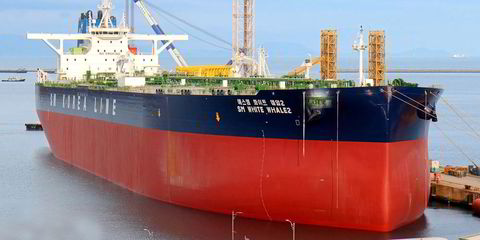Tidewater chose to flip one of its ships rather than pay the high reactivation costs, and sees that as the norm going forward for the struggling offshore sector.
Quintin Kneen, chief executive of the Houston offshore support vessel-owning giant, said the reactivation cost for the unnamed US-flagged ship was $3m.
The sale of the ship sold brought in $4m, Kneen said.
The move comes at a time when the cost to get a ship running that had been idled even before the Covid-19 pandemic is approaching $5m or more for each vessel, the chief executive told analysts.
"The costs are getting so high for those vessels that weren't working before the pre-pandemic period that I don't think a lot of them are going to get reactivated," he said during Tidewater's second-quarter earnings call.
"We're definitely focusing our fleet on the higher-end vessels, the larger vessels, the more modern vessels which we believe will command a higher day rate overall and be more fuel-efficient and more cost-efficient moving forward."
When the Covid-19 pandemic set in, and plunged offshore into a second downturn in a decade, Tidewater made the decision to scrap or sell dozens of laid-up ships.
The company still has 14 it is looking to sell and Kneen said that while it could sell more, it was not planning on it.
"I would classify that sale as an opportunistic one," he said on the call.
"At any point in time, we are willing to sell any vessel if the present value is in excess of our full market recovery scenario, which was the case with this vessel."
Kneen said he expects all 151 ships in the Tidewater fleet, excluding the 14 to be sold, to be fully employed by the end of 2022 as supply and demand in the sector reaches pre-coronavirus levels by the first quarter of next year.
For the second quarter of 2022, the company reported a $29.5m loss, better than the $110m loss reported for the same period last year and less than the first quarter's $35.5m loss.
The quarter saw better performance from the fleet, with its ships earning $10,435 per day on average worldwide, up from $9,993 per day in the first quarter with 57% utilisation, up from 52.9%.






